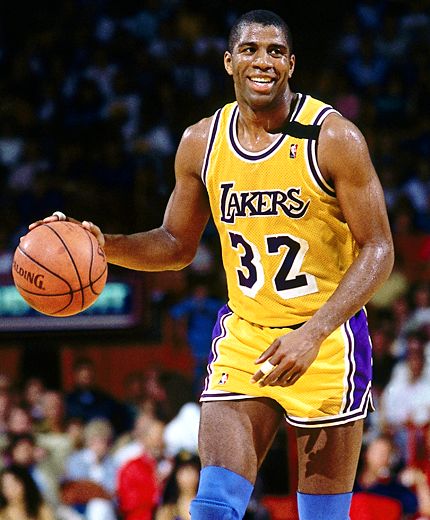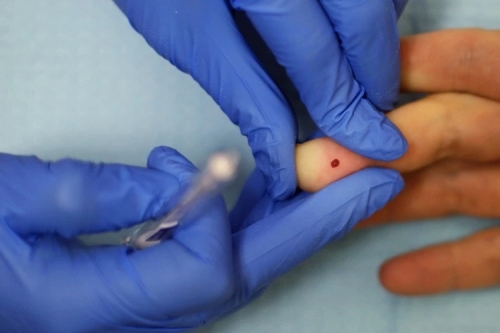For some people the idea of being tested for HIV is as simple as making a note in a calendar, an entry which sits comfortably beneath a dentist appointment and above a mother’s birthday. For others, the idea of making that appointment, or taking that long walk to the clinic, is one of the most nerve-wracking experiences they can imagine. However, in an age where the numbers of people diagnosed with HIV are increasing, has our natural fear of the unknown become a luxury we simply can’t afford?
Many years ago it was a scary disease. We called it AIDS and it became a name associated with sin and death. The massive number of infections, particularly in the gay community, were staggering, and as the death toll slowly crept up, nations across the world panicked. It’s impossible for any society to come through such a dark time and emerge unscathed, and so the fear of a silent killer left a scar on our cultural memory which has never really healed, and the mere mention of HIV and AIDS still has a way of stopping conversations.
Thankfully, things have changed since then and treatment for HIV and AIDS is better now than it has ever been. People who have the condition are now finding that their lives have not changed completely, and they are still able to live as long and do all the same things they could before. It’s true that they now have a few additional concerns to think about but with the help of medication, HIV is now manageable. However, it seems that attitudes have not moved on as much as the treatment, with people still finding themselves afraid, ashamed and worried that their lives will never be the same again.

To try and get a better understanding of the feelings and attitudes behind the diagnosis, I spoke with Sona Barbossa, a counselling team leader with the GMI Partnership. Over the course of our conversation, Sona revealed that the anxiety surrounding being tested and anxiety about the results is something which does prevent people from being tested regularly. ‘I don’t think it’s so much a fear about the test itself, but more fear of what the results might be and having to deal with that. There is still a stigma around it and I see many guys who have not been tested for years because they’re afraid of finding out the results and having to make decisions upon learning their results. Also, there’s still a lot of thinking around where people believe that it won’t happen to them, so they don’t see the point in being tested.’ When I asked Sona if she thought attitudes have changed much since HIV first came to public attention, she told us she didn’t think so. ‘People still connect HIV with promiscuity, the gay scene and with drugs. There’s also still a lot of shame and guilt that surrounds the condition, which I think plays a large role in whether people want to be tested or not and can prevent people from making those all important first steps to be tested.’
The fear of the condition is more than understandable. Even with new treatments being developed every day, HIV is still a lifelong condition which also has lifelong consequences. There’s also a very real stigma still attached, which has always been associated with homosexuality, promiscuity and intravenous drug use. This forces a lot of people who have HIV into a double life to keep it a secret from their friends and family. Sona herself pointed out during our conversation that a lot of people still feel like they will be shunned by their loved ones. ‘The fear of being judged and being looked at differently does form a large part of why people may keep this condition from their loved ones. They think that people may change towards them, and worry that their friends won’t accept them any more, and obviously the worry that their families won’t accept them any more. With this kind of attitude pervading society, it’s little wonder that people would be put off from learning their status, as it forces people to think about a lot of things before they even go to have the test done.’
According to statistics gathered by the gay men’s health charity GMFA, 59,000 gay men were tested for HIV last year. While this seems like a large figure, I was later informed by Carl Burnell, the CEO of GMFA, that this figure may only make up 15-25% of the estimated gay population. This becomes all the more worrying when GMFA’s recent statistics uncovered that 82% of new HIV infections are actually passed on from people who have not been checked themselves. The organisation has consistently fought to encourage people to learn their status and to be checked at least once a year, however in the course of their work, they find that anxiety about HIV is having a definitive effect on preventing people from being checked. When they examined the reasons for not going to be tested, they found that 30% of those asked noted that nerves about their results were a factor, with a further 10% going on to say this was the main thing stopping them from taking the test. Burnell also noted that though people are still keen to avoid becoming HIV positive, their awareness that the condition is all around them is decreasing, and this can potentially lead people to take risks with their sexual health. He also commented that there is still a popular misconception among young gay men that HIV is not something they need to worry about, as it’s still considered by some to be a disease that only harms older people.
However, it isn’t just methods of treatment which have moved on, but also methods of detection. Time was, that if you wanted to have an HIV test you would have to go to your GP and ask for the test specifically and then be referred to have your blood taken and examined. The process would take anywhere between 3 days and 2 weeks depending on the area, and the very idea of waiting for the results could be described as hell-on-earth for people who were brave enough to be tested in the first place. Now people are able to walk in and be tested within half an hour and have their results the same day, sometimes within minutes. Similarly, thanks to the work of organisations like the Terrence Higgins Trust (THT), people are now able to order and administer the test in the privacy of their own home, send off a small vial of blood and have their results sent to them via email or even text. The sad fact is that even with all these different ways to be diagnosed, not enough people are going out and being regularly checked.
 Here at So So Gay we like to practice what we preach, so when it came to writing a feature that dealt with being fearless and going to get tested, I decided to go out and take the test myself. Having been in a long-term relationship and suddenly single again, it seemed like the right time to know my status, since I was back on the dating scene. I picked the 56 Dean Street clinic in London for its walk-in service and quick results. The staff were amazing and they made me feel reassured every step of the way. They made me feel like, even though I may have been nervous to be there, I was doing the right thing by being tested. I must admit I was scared – after all the idea of drawing blood at the best of times is scary, especially for a needle-phobe like me – but I felt that whatever the result, it would all be OK. It’s impossible to be in that situation and not wonder about what happens if you get a bad result and I was no different as I sat in the waiting room. However, I was seen by the nurse extremely quickly and within a few minutes of me sitting down in the private room, we were ready to draw blood. The nurse was a saint and kept me calm, and reminded me that even if I was HIV+, then I would still be the same person I was when I walked in, and that there are services out there to help me every step of the way. When my result came back, I was thankfully HIV-. Although I was relieved, I also knew that being tested was only half the battle, so I went and made an appointment to come back in 6 months to be checked again. I felt like it was a responsible thing to do, not just for my own health, but also for the benefit of anyone I might come to know in the future.
Here at So So Gay we like to practice what we preach, so when it came to writing a feature that dealt with being fearless and going to get tested, I decided to go out and take the test myself. Having been in a long-term relationship and suddenly single again, it seemed like the right time to know my status, since I was back on the dating scene. I picked the 56 Dean Street clinic in London for its walk-in service and quick results. The staff were amazing and they made me feel reassured every step of the way. They made me feel like, even though I may have been nervous to be there, I was doing the right thing by being tested. I must admit I was scared – after all the idea of drawing blood at the best of times is scary, especially for a needle-phobe like me – but I felt that whatever the result, it would all be OK. It’s impossible to be in that situation and not wonder about what happens if you get a bad result and I was no different as I sat in the waiting room. However, I was seen by the nurse extremely quickly and within a few minutes of me sitting down in the private room, we were ready to draw blood. The nurse was a saint and kept me calm, and reminded me that even if I was HIV+, then I would still be the same person I was when I walked in, and that there are services out there to help me every step of the way. When my result came back, I was thankfully HIV-. Although I was relieved, I also knew that being tested was only half the battle, so I went and made an appointment to come back in 6 months to be checked again. I felt like it was a responsible thing to do, not just for my own health, but also for the benefit of anyone I might come to know in the future.
The truth is that it’s very easy to get ‘caught short’ in life and sometimes that leads us to take risks when we know we shouldn’t. The true test is when we make these mistakes, we have to make sure that we take the time to know our own status, since it doesn’t just affect us, but also the people we care about. HIV is no longer the death sentence it used to be and people are able to live normal, healthy and happy lives like they did before. However, this is thanks to the amazing progress we have made in treating the condition and we can only begin to do that when we make the decision to get tested and keep on top of our health. It’s a scary prospect to some and no one takes that for granted, but by taking the chance to be tested, you could be buying yourself years of life. Speaking to Carl at GMFA, he even proclaimed that we could well see the cure to HIV in our lifetimes, so let’s all make sure we are all there to see it.
Some key facts to remember:
- HIV is a disease which is transmitted by the sharing of bodily fluids, i.e. blood and semen. It does not discriminate against people who are older, more sexually active or people who use drugs.
- There is currently no cure for HIV, so people with the condition have it for the rest of their lives.
- With an early diagnosis people are able to live long lives. If it is left untreated, then it becomes harder to fight.
- People who have HIV are still the same people they have always been, and it is wrong to judge people or treat them differently because of their status.
- Condoms are not 100% effective. There is still a chance you can get HIV if you are safe, so you need to get tested at least once a year to know if you have the condition or not. The only ‘safe’ sex, is no sex.
Above all, remember that we have a responsibility to care for each other as well as for ourselves because, regardless of positive or negative, we are still united as a community. Be brave, go out and get tested so you know your status. There is an old saying which says ‘knowledge is power’, but in this instance it would be more accurate to say ‘knowledge is life’, whatever your status may be.
Via So So gay
HAVE YOU EVER HAD A HIV TEST?
If you’re interested in having a HIV test, we offer a completely free and confidential rapid HIV test and you’ll get the results within 60 seconds from a simple finger prick test. We use the Insti HIV test produced by BioLytical laboratories. The test is 99.96% accurate from 90 days post contact for detecting HIV 1 and 2 antibodies. We also have a mobile testing van which is often out in communities providing mobile rapid HIV tests. Appointments are not always necessary, if you would like a test, please contact us on 0116 2559995
STAY UPDATED
























